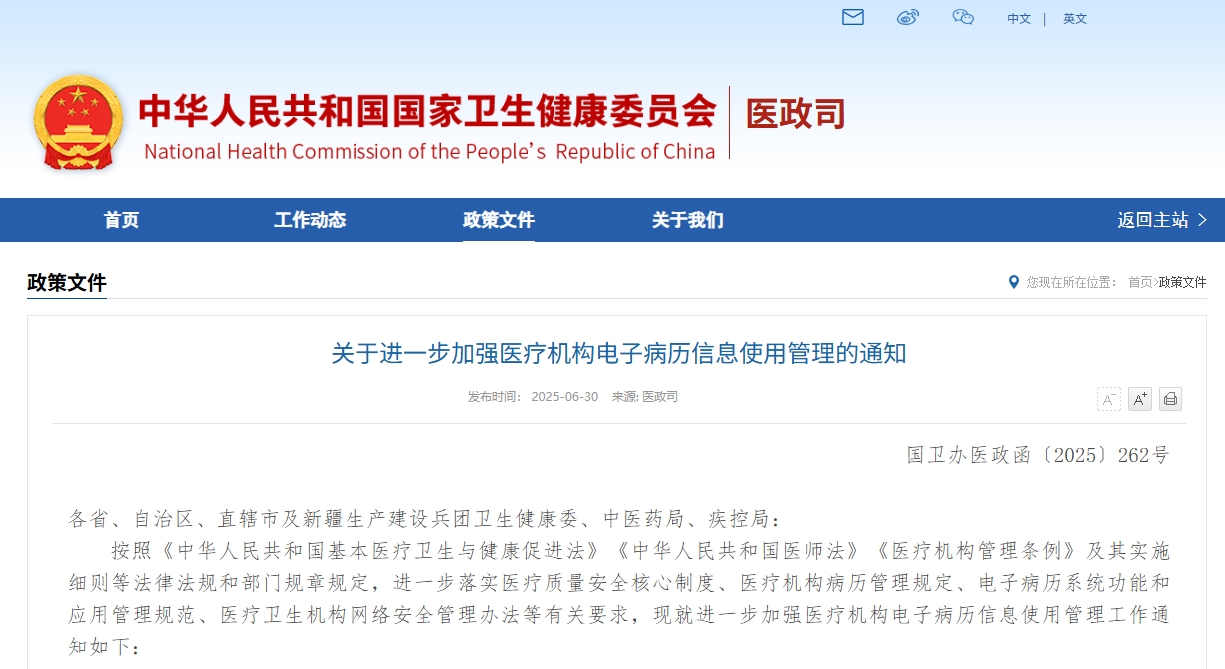
#Industry ·2022-09-02
Mutual recognition of inspection and testing results refers to the mutual recognition of inspection and testing results between different medical institutions. According to incomplete statistics, the cost of various examinations and tests accounts for about 30% of patients' medical expenses. Promoting mutual recognition of results can avoid patients undergoing repeated examinations, reduce unnecessary medical expenses, save medical time, and improve medical efficiency. The three-year action plan for information exchange and sharing among national medical and health institutions proposes that by the end of 2025, all secondary public hospitals across the country should achieve cross institutional access to examination and testing results. What is the progress of mutual recognition of results? What are the remaining difficulties? How to further promote mutual recognition? Regarding the issues of concern to readers, a reporter from People's Daily recently interviewed relevant officials from the National Health Commission. Q: What are the contents of the inspection results? How is the progress of interoperability and sharing of results? Answer: According to the "Management Measures for Mutual Recognition of Inspection and Testing Results in Medical Institutions", the inspection results refer to the images or data information obtained by examining the human body through ultrasound, X-ray, magnetic resonance imaging, electrophysiology, nuclear medicine and other means. The test results refer to the data information obtained from biological, microbiological, immunological, chemical, hematological, hematological, biophysical, cytological and other tests on materials from the human body. The inspection results do not include the diagnostic conclusion issued by the physician. The National Health Commission actively promotes the mutual recognition of inspection and testing results. In the actual diagnosis and treatment process, the vast majority of medical staff often require patients who are referred for follow-up or referral to carry their existing examination and test results during the visit, and mutually recognize the examination and test results that can meet the diagnosis and treatment needs. More than 200 prefecture level cities have carried out the exchange and sharing of inspection and testing results. The mutual recognition platform for inspection and testing results in Fujian Province has been connected to 243 public hospitals at or above the second level, basically realizing the retrieval and sharing of inspection and testing result reports among provincial, municipal, and county-level public hospitals. Guangdong Province has identified 114 projects for mutual recognition of inspection and testing results, and has achieved cross institutional sharing and retrieval of inspection and testing results from 336 medical institutions in Guangzhou and Shenzhen. At the beginning of 2020, Gansu Province launched the sharing of medical records and mutual recognition of examination and testing results among medical institutions in the province. Taking the Second Hospital of Lanzhou University as an example, when a patient visits the hospital, doctors can view the patient's medical history in other hospitals, including examination and test results and electronic medical records, on the diagnosis and treatment interface. During the validity period of the examination and testing results, when the doctor issues relevant examination and testing orders, the system will remind that the item is a mutually recognized item. At the same time, the real-time examination and testing results will also be uploaded to the provincial health information platform to improve the diagnosis and treatment information of patients. At present, Lanzhou University Second Hospital provides more than 7400 mutual recognition projects for patients every day, reducing duplicate examinations and saving patients time, money, and worry. Q: What are the key steps to do a good job in mutual recognition of results? Answer: Firstly, it is necessary to establish and improve a platform for sharing inspection and testing data, in order to promote effective sharing of inspection and testing data among medical institutions. Secondly, the prerequisite for mutual recognition is accurate and reliable results, and the quality level of inspection and testing work in various regions, levels, and types of medical institutions should be improved. In addition, relevant support and guarantee policies should be improved. Medical institutions need to increase investment in capital and manpower costs to carry out information technology construction and connect with shared platforms, and to increase support efforts. During the diagnosis and treatment process, due to changes in the patient's condition and other reasons, sometimes even if the same examination has been done in the early stage, it is necessary to conduct another examination to clarify the progression of the disease and ensure the quality and safety of medical care. According to statistics from some places, about 60% of patients require re examination in practice, especially those whose condition may change rapidly in the short term, such as those with trauma, acute blood loss, ischemic diseases, etc., and the proportion of patients who need timely re examination is even higher. At this point, it is necessary to use the physician's judgment as the standard and approach it rationally and objectively. Q: How can we further promote mutual recognition of inspection and testing results? Answer: At the national level, we need to establish information standards and specifications for the exchange and sharing of inspection and testing results, clarify the list of items for mutual recognition of inspection and testing results, form a coding database for inspection and testing items, establish a main index data service interface for cross provincial exchange and sharing of inspection and testing results, and establish a sound management system for quality control and authorized access of inspection and testing results. At the provincial level, based on the provincial comprehensive health information platform, some pilot provinces have built "image clouds" and established a standardized and standardized mechanism for sharing inspection and testing results. Medical institutions and personnel have borne certain financial and labor costs in upgrading and transforming information systems, storing cloud films, and analyzing and interpreting inspection and testing results. Relevant departments need to actively support them in terms of investment and policy support. Question: How to protect patient privacy? Answer: In the process of carrying out the three-year campaign for information exchange and sharing among national medical and health institutions, efforts should also be focused on further strengthening network and data security, and enhancing the protection of medical and health data. Health administrative departments at all levels should establish and improve network and information security management systems that comply with the scenarios of medical and health information exchange and sharing. Medical institutions should strengthen data security management, implement full lifecycle security management for the generation, transmission, storage, use, sharing, and destruction of data in accordance with laws and regulations, improve data security protection capabilities, and enhance the protection of personal privacy. Protecting patient privacy and ensuring that medical and health data is not leaked or abused through authorization access mechanisms. Source | People's Daily

2025-07-04

2025-06-21

2025-06-13
You can send us a general question inquiry here
LINKS



0371-23627927
consult
top